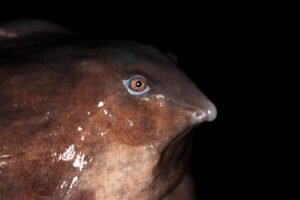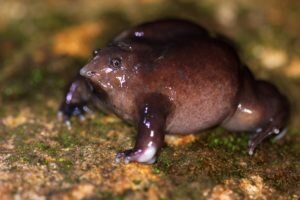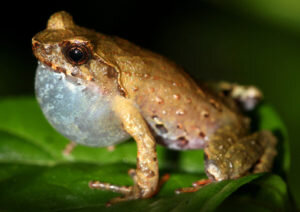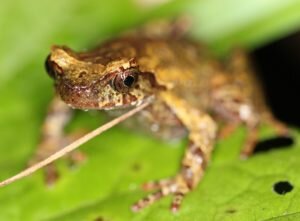Two thirds of amphibian species have either missing or out-of-date assessments
Press Release – Conservationists are calling for increased effort towards assessing the extinction risk faced by the world’s amphibians, after it transpired that gaps in current data mean that the conservation status of almost two-thirds of species is unknown.
A new study, led by international conservation charity ZSL (Zoological Society of London) alongside scientists from the Australian Museum and the IUCN Amphibian Red List Authority, calls for urgent action to plug these knowledge gaps, particularly in the face of ongoing habitat loss and degradation that continues to detriment amphibian populations worldwide.
Lead author Benjamin Tapley, curator of herpetology at ZSL, said: “The last time that we had a near-complete overview of extinction risk in amphibians was over 10 years ago, in 2004, when the IUCN’s ground breaking Global Amphibian Assessment was published. Since then, more than 1,700 amphibian species have been discovered – but the extinction risk of most of these new species simply isn’t known.”
Already understood to be one of the most threatened groups of animals on the planet, the paper illustrates that over the last 12 years, the assessment of extinction risk of amphibians has not kept up with the discovery of new species and that many existing assessments are now out of date. The new report found that 61.3 percent of all known amphibian species have either not had their extinction risk evaluated, or are suffering from out-of-date information.
- Purple frog (Nasikabatrachus sahyadrensis)
- Purple frog (Nasikabatrachus sahyadrensis)
- Red-thighed horned tree frog (C) ZSL
- Red-thighed horned tree frog (C) ZSL
Tapley continued: “Some researchers estimate that at least 12,000 species of amphibian might exist. At present about 7,700 of these have been described by science, but we have extremely poor overview of how many of these species are faring. With limitations to our understanding of extinction risk we are less able to prioritise species for conservation efforts, and there is a risk of conservation funding and effort not being allocated to the species that most need it.”
This issue was found to be particularly problematic in those regions that play host to the richest diversity of amphibian species, specifically the tropics. Many of these areas are currently experiencing rapid expansion of human population, putting extra pressure on the newly-discovered species’ habitats and making them particularly at risk. Additionally, newly-discovered species – and indeed those yet to be discovered – are most likely to be more at risk than the average known amphibian species, as they tend to occur only in small areas, meaning they are more at risk from localised threats.
Amphibians play a crucial role in ecosystems across the planet, keeping pest insect numbers down, being a key food source to other species and allowing nutrients to move from aquatic to terrestrial environments as many amphibians develop in the water and move onto land once they metamorphose. The loss of amphibian species from an ecosystem has already been seen to have economic consequences with the over-collection of frogs for the international meat trade being linked to an increase in agricultural pests.
The authors call for adequate funding to be dedicated to IUCN Red List assessments for amphibians, greater incentives to exist for people to contribute to the assessment process and for authors describing new species to ensure they include information relevant to extinction risk assessments in published species descriptions. Through this a better knowledge base can be built to underpin effective conservation work in the future.
For more information on the work ZSL is doing to conserve amphibians worldwide, visit www.zsl.org










